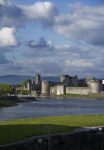On the road again, this time the Silk Road! (Maybe it’s your time)
It has been a long summer; well it has been a long time since Easter and my broken ankle, which has now completely mended. It was time to hit the road again, but this time the Silk Road (well part of it), and head off to Tajikistan and Uzbekistan.
I have been on parts of the Silk Road before, in both Armenia and Georgia, China and Russia, but this was different, this was the longest section of the road that I have travelled, about 2,000km. Using a variety of transports, including, Cars, Buses, Taxis, Horseback J and even a bit of walking, I slowly made my way from Dushanbe, the capital of Tajikistan to the Uzbek capital Tashkent while taking in famous historical “Museum-cities” such as Samarkand and Bukhara in Uzbekistan along the way.
The Silk Road opened circa 500-330 BC and for over a thousand years, it was a major trading route and the World’s longest road for exporting luxury goods, silks and spices from China to the Mediterranean. It starts in Chang’an (now known as Xian) and between branches, splits and other routes it stretched right across to Damascus in Syria to Tyre in Lebanon, Alexandria in Egypt to the Ganges Delta in the Bengal region of Southern Asia and to Greece and Italy.
Today the Chinese government have plans to reopen the Silk Road for to stimulate economic growth and trade across Asia and beyond in a new initiative called the Belt and Road project classed as the biggest infrastructure project in history, at over $900Bn- almost a Trillion Dollars. The project name is confusing when you consider the Road is not a road but rather a connecting sea passage linking Chinas Southern coast with East Africa and the Mediterranean. In addition, to add to the confusion, the belt is an array of land corridors, linking China with Central Asia, the Middle East and Europe.






